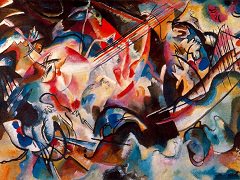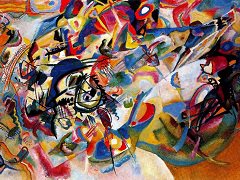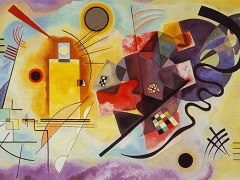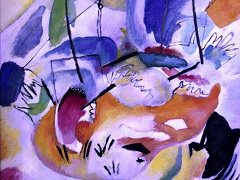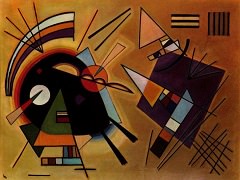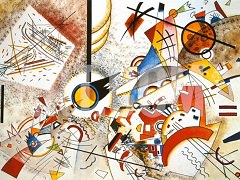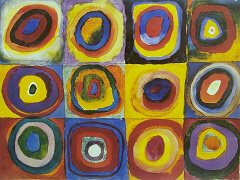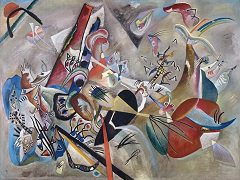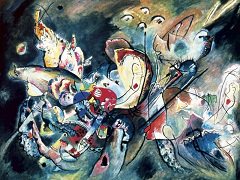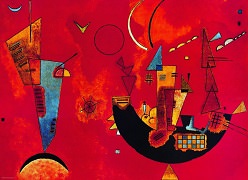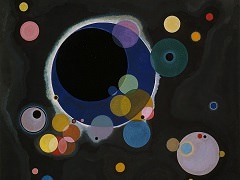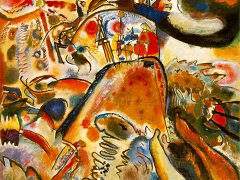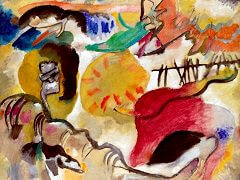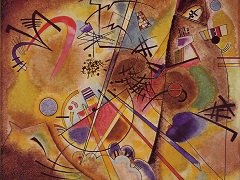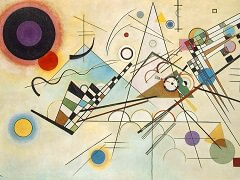Red Knot, 1936 by Wassily Kandinsky
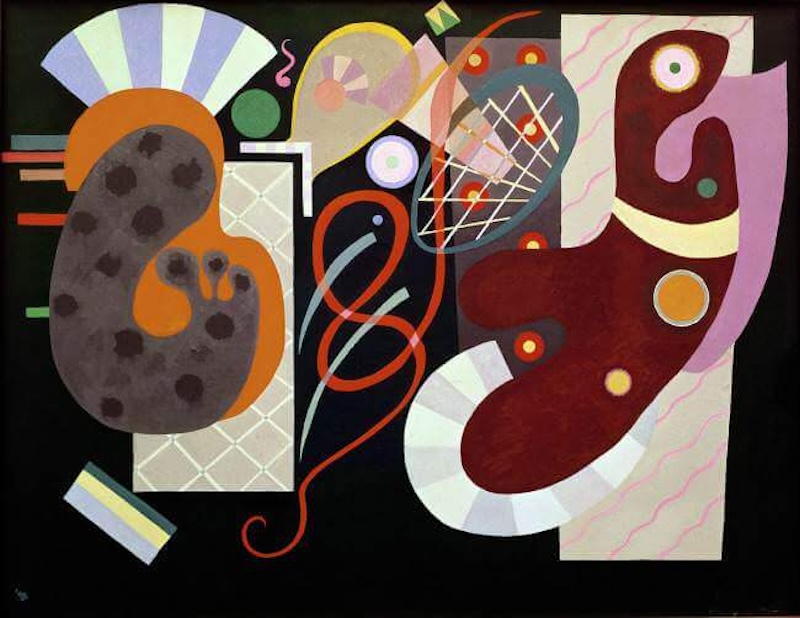
The painting Red Knot introduces o new compositional structure used by Kandinsky in his work of this period, the bipartite division of its component parts. In this work we see two quite distinct and very different biomorphic organic forms, the one on the left resembling a sea horse, while the one on the right seems inanimate, possibly embryonic. A red line delineates the two forms, possibly a fishing line that has become knotted around some reeds. The figure on the right is oblivious to this event, perhaps underpinning the notion that it is embryonic, while the left-hand figure is clearly traumatized.
As in so many of Kandinsky's paintings the composition relies for effect on the use of colour, in this case on unusual use of magenta and intense pink creating a highly decorative work that is redolent of Matisse. The 'forms' are given a spatial awareness by the clever use of red on and around them, which is repeated in the 'line' and 'knot', thus making the viewer aware of the spatial elements of the composition.

